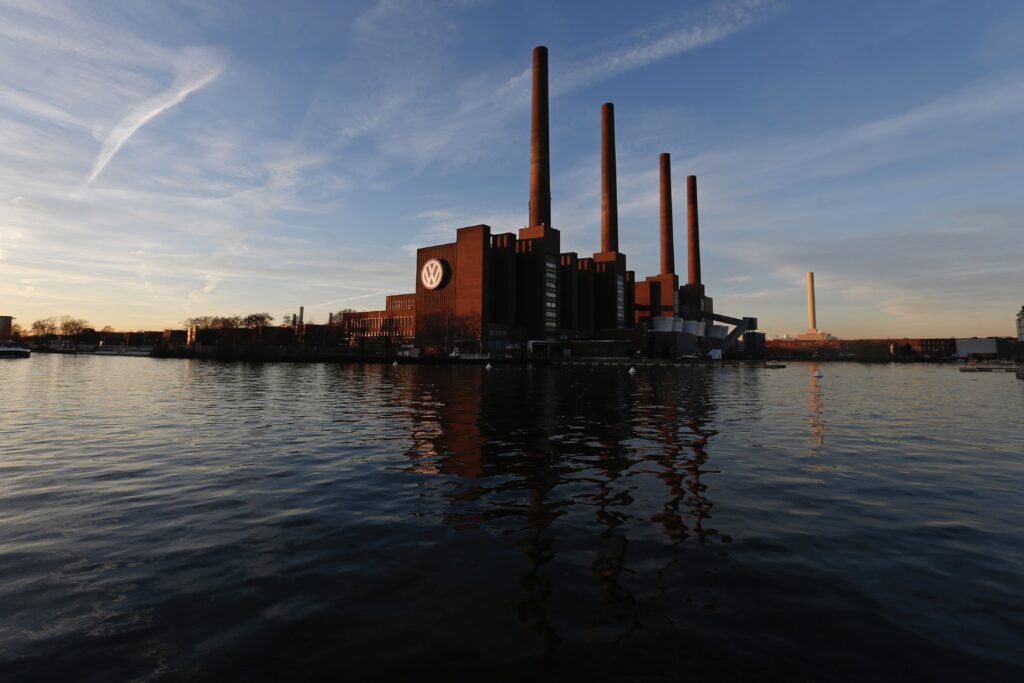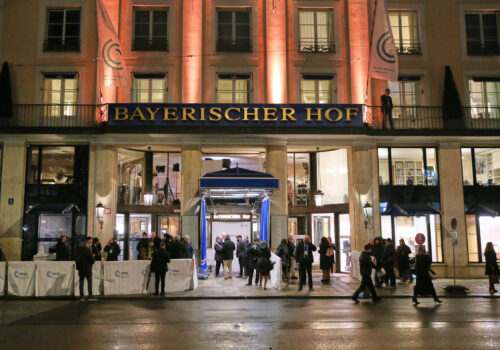For decades, Germany has been the economic engine of Europe, boasting the largest economy in the European Union (EU) and ranking third globally by nominal gross domestic product (GDP). However, in recent years the nation’s economic trajectory has faltered. Following two consecutive years of contraction, Germany faces significant structural and political challenges that will demand the next chancellor’s immediate attention. With federal elections set for February 23, the stakes are high for Germany . . .
. . . and for Europe. “When Germany sneezes, Europe catches a cold.” This well-worn metaphor encapsulates Germany’s outsized influence on the EU’s economic and political landscape. The nation’s economic slowdown and political instability reverberate across the continent, threatening the cohesion and growth of the bloc’s members.
Understanding Germany’s current challenges is crucial to assessing the potential risks for the EU as a whole. Some of these challenges were pointed out by the former European Central Bank President Mario Draghi in his report last year on the future of European competitiveness.
Political uncertainty
Polls suggest a fragmented political landscape ahead of the February 23 elections. The center-right Christian Democratic Union (CDU), and its Bavarian counterpart, the Christian Social Union (CSU) are leading with 30 percent. The far-right Alternative for Germany (AfD) follows in second with 22 percent, while the center-left Social Democratic Party (SPD), the Greens, and smaller parties trail behind. While the AfD has been gaining support, it still appears unlikely that any of the established parties will form a coalition with it. If this holds after the election, then coalition negotiations are set to be particularly complex. One likely scenario is the “Kenya coalition” of the CDU/CSU, SPD, and Greens, so-called because of the party colors that mirror the black, red, and green of the Kenyan flag. Another is a “Germany coalition” of the CDU/CSU, SPD, and FDP.
The continuation of the “traffic light” coalition (SPD, Greens, and the Free Democratic Party) appears unlikely, strengthening expectations that CDU leader Friedrich Merz will assume the role of chancellor. A prominent Atlanticist and long-time opponent of former German Chancellor Angela Merkel, Merz returned to politics after she left office in 2021. A former businessman, he has reshaped the CDU’s political direction, adopting more conservative positions on migration, a market-oriented approach to economic policies, and a more pragmatic stance on the energy transition.
Economic stagnation and structural issues
Germany’s most immediate problem is that its economic growth has stalled. The European Commission forecasts GDP growth of just 0.7 percent in 2025, marking the slowest pace among EU nations. Since 2017, the German economy has grown by a mere 1.6 percent, far below the EU average of 9.5 percent. Structural weaknesses, such as high energy costs, low public investment, and an overreliance on exports, have entrenched stagnation. Financial Times associate editor Wolfgang Münchau’s newest book, Kaput: The End of the German Miracle, underscores these imbalances. In it, he warns that Germany’s export-driven model and limited domestic investment have left it ill-prepared for future challenges.
Germany’s industrial base, once the backbone of its economy, is eroding. Prominent German companies are relocating some production abroad, citing lower costs and fewer bureaucratic hurdles. Industrial production has declined steadily, with 2024 output at just 90 percent of 2015 levels. In stark contrast, Poland’s industrial production grew to 152 percent of its 2015 level, reflecting a broader shift of manufacturing capabilities to Central and Eastern Europe.
Germany’s aging population poses significant challenges for its workforce and productivity. With a shrinking labor pool, industries face rising costs and pressure to automate. The unemployment rate in Germany remains low, at 5 percent, but industrial layoffs and restructuring are expected. While the Hartz labor market reforms of the early 2000s and the introduction of the euro in 1999 mitigated similar challenges, today’s environment demands significant public investment and policy innovation to sustain competitiveness. This time, devaluating and decreasing wage growth is not on the table.
High energy prices, driven in part by volatile gas markets, are undermining German competitiveness. Public investment remains inadequate, accounting for just 2.8 percent of GDP—below the EU average of 3.6 percent and far behind Poland (5.1 percent) and Sweden (5.2 percent). Bureaucratic obstacles and a cultural aversion to deficit spending continue to stymie large-scale projects that could drive innovation and increase sustainability.
In contrast to Germany, several Central and Eastern European nations—such as Poland, Hungary, and the Czech Republic—have emerged as more dynamic competitors. These economies benefit from robust foreign investment and growing service sectors. Spain, too, has become a more attractive destination for foreign direct investment, outpacing Germany in growth and innovation.
Risk aversion and Chinese competition
Germany’s bureaucracy, often seen as a hallmark of precision and order, has increasingly become a barrier to innovation and economic dynamism. Complex regulatory frameworks and lengthy approval processes are stifling entrepreneurial initiatives, making it difficult for businesses to adapt swiftly to changing market conditions. The country’s aversion to risk, rooted in a cultural preference for stability and caution, further exacerbates this challenge.
Many German companies prioritize incremental improvements over bold, transformative projects, fearing failure and the potential regulatory repercussions. (Think, for example, about how it has been slow on the electric vehicle revolution.) This conservative mindset has hindered Germany’s ability to compete in fast-evolving sectors, such as technology and green energy, where agility and risk-taking are essential. Addressing these structural issues will require not only simplifying administrative processes but also fostering a cultural shift toward embracing innovation and calculated risks.
The growing dominance of Chinese automakers in the global electric vehicle (EV) market, in accordance with the “Made in China 2025” strategy, poses a significant threat to Germany’s automotive sector, a cornerstone of its economy. Chinese manufacturers, supported by substantial state subsidies and vertically integrated supply chains, have achieved cost efficiencies and technological advancements that are challenging Germany’s competitive edge.
Chinese automakers such as BYD and NIO are entering European markets with affordable and innovative EV models, outpacing German automakers in battery technology and production scalability. This competition is eroding the global market share of German automotive giants, such as Volkswagen, BMW, and Mercedes-Benz, which are grappling with high production costs, regulatory hurdles, and slow domestic EV adoption.
Data from the German Association of the Automotive Industry reveals that passenger car production in Germany declined by over 25 percent between 2017 and 2023. Given the industry’s contribution to exports, the competitive pressures from China threaten to further weaken its industrial base, with potential spillovers to its EU partners, which are reliant on German trade and investment.
Germany’s car production, which is a key export to the United States, is included in the tariff package prepared by the Trump administration, with a 25 percent tariff at the US border. Any potential economic hurdles for Germany could not only create political challenges but also lead to an economic crisis.
The path forward
The challenges facing Germany’s next chancellor are formidable, encompassing economic, political, and structural domains. Revitalizing growth in an economy that appears increasingly mired in stagnation demands urgent action. Central to this effort is the need to reconcile Germany’s traditional reliance on industrial exports with increased public investment. At the same time, navigating coalition dynamics will be critical, as the past several years have demonstrated a lack of meaningful progress.
On the economic front, Germany must reevaluate its energy policy. High energy prices, driven in large part by an overreliance on renewable energy sources without sufficient grid modernization and storage solutions, have burdened businesses and households alike. A robust industrial strategy is essential to bolster the competitiveness of Germany’s automotive manufacturing sector. Deregulation and streamlined bureaucracy are also urgently needed to inject greater dynamism into the German economy.
Failure to implement reforms risks exacerbating Germany’s economic problems, with repercussions that extend beyond its national borders. A weakened Germany would likely erode confidence in European markets, exacerbate economic disparities within the EU, and embolden Euroskeptic movements. Conversely, decisive leadership and transformative reforms could not only rejuvenate Germany’s economy but also reaffirm its role as a stabilizing force and leader within the European project. For the next chancellor, the stakes are nothing less than determining Europe’s future trajectory or overseeing the economic collapse of their country.
Piotr Arak is an assistant professor of economic sciences at the University of Warsaw and chief economist at VeloBank Poland.
Further reading
Fri, Feb 14, 2025
Dispatch from Munich: Trump has put European history in motion again
Inflection Points By Frederick Kempe
As the annual Munich Security Conference opens, there is a palpable sense that the city might again be a place where history is made.
Tue, Feb 4, 2025
The next German chancellor must lead from the front, not the middle, on European security
New Atlanticist By Rachel Rizzo, James Batchik
From support for Ukraine to defense spending, German leaders would be wise to take the phrase Führung aus der Mitte permanently out of their vocabulary.
Tue, Dec 24, 2024
How might Germany’s coming election shape future support for Ukraine?
UkraineAlert By Stuart Jones, Katherine Spencer
There is a good chance Germany’s snap elections in February 2025 will result in increased support for Ukraine but Kyiv will be hoping the campaign does not send signals of Western disunity to Moscow, write Stuart Jones and Katherine Spencer.
Image: A general view shows the Volkswagen (VW) factory in Wolfsburg, Germany December 8, 2015. REUTERS/Carl Recine




